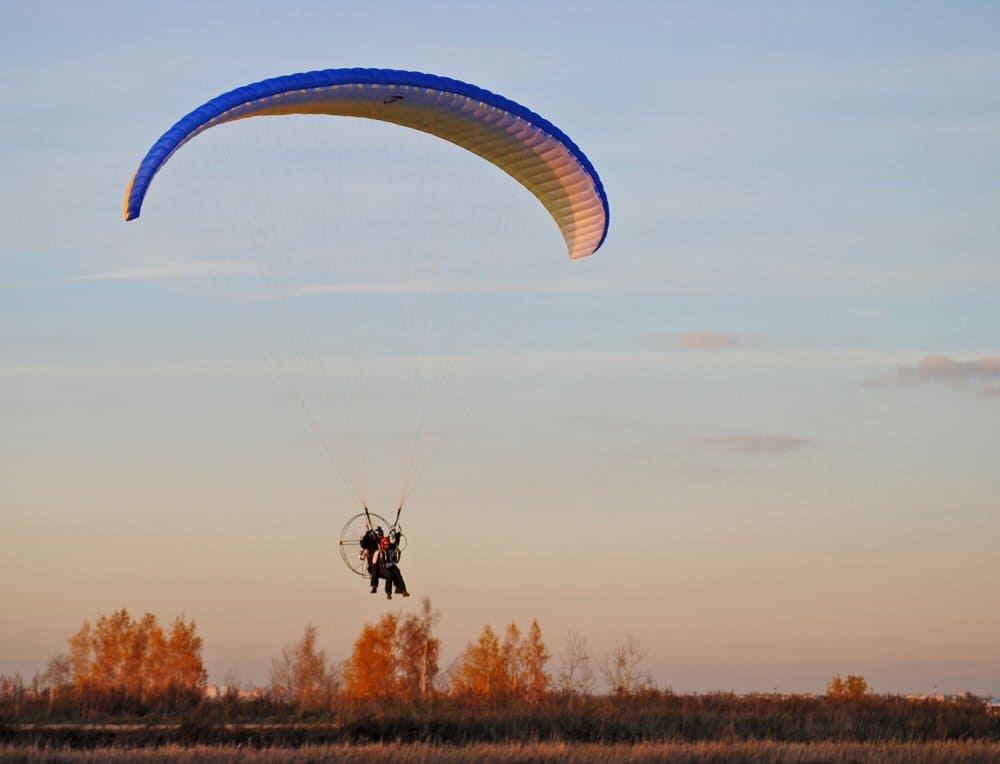Tandem paraglider ASA Jumbo 2 for sale
The Jumbo 2 is a two-seat paraglider designed for both professional and amateur pilots. For professional pilots, as a rule, the main requirements for a tandem paraglider are an easy and reliable launch in different conditions, a large range of flight speeds, and a long wing life. For amateurs, the most important features are usually a high level of passive safety, a paraglider's behavior in high turbulence conditions, and easy and simple control.
The tandem paraglider Jumbo-2 was designed primarily for soaring flights, taking into account the requirements of both professional and amateur pilots.
Design features of the paraglider Jumbo 2
The Jumbo 2 paraglider has a combined airfoil. It combines the undercut characteristic of high-bearing glider airfoils with a slight S-shape at the tail end of the airfoil. Undercut provides a high coefficient of lift at low speeds. Therefore, Jumbo-2 easily takes off in the low wind and in a calm even from very limited areas.
With the trim tabs fully released and the controls in place, the profile of the paraglider takes on an S-shape, i.e. it becomes somewhat self-balancing ("reflex"). As a result, the flight speed increases (by about 10 km / h), and at the same time the resistance to the paraglider's leading-edge turning in turbulent air increases.
The power ribs of the paraglider (to which the loops for the lines are sewn) are made of a special fabric with a "hard impregnation" (NewSkytex 9092 E29A). The state of this impregnation (and, consequently, the ability of the rib material to distribute the load from the lines to the load-bearing upper surface of the wing) to a decisive extent affects all the aerodynamic characteristics of the paraglider. Therefore, to increase the strength and life of the paraglider, all attachment points of the lines on the ribs are double-reinforced. First, strips of self-adhesive fabric are glued from the attachment points in diagonal directions. This drastically reduces the requirements for the state of impregnation and significantly increases the strength of the fabric. Only after that, as usual, overlays of dense lavsan fabric are sewn on.
The line system of the Jumbo-2 paraglider is made with a large margin of safety in order to ensure the possibility of flying with a significant overload (for example, for flights with a two-seat trike). For the front row and the central part of the wing, slings with a breaking force of 350 kg were used. The manufacture of loops at the ends of such lines required the use of special technology of double seam with an offset, which allows for reducing the stress concentrator and thereby avoids reducing the strength of the line.
Jumbo 2 in flight
Filling the canopy and lifting the wing does not cause difficulties even in calm conditions. In strong winds, there may be a slight tendency to "overtake". It is easily parried by the pilot.
Management is effective even at low costs (15...20 cm) and efforts. This is quite enough for processing thermal flows. At the same time, a large maximum control stroke (about 80 cm with a sharp increase in load) makes an accidental wing stall extremely unlikely.
When flying in turbulent conditions, the damping is moderate. However, this is easily offset by greater opportunities for active management. Opening in the case of an asymmetrical turn occurs spontaneously in 2 ... 3 seconds, the turn is smooth and usually does not exceed 90 degrees.
Landing has no features, it is easy to determine the right moment for braking ("undermining"). In this case, the speed is extinguished almost to zero.
Technical data
| 39 | 42 | |
| Area | Flat (m2) | 38,80 | 42,48 |
| Span | Flat (m) | 14,23 | 14,90 |
| Aspect ratio | Flat | 5,22 | 5,22 |
| Area | Projected (m2) | 33,33 | 36,50 |
| Span | Flat (m) | 11,36 | 11,90 |
| Aspect ratio | Projected | 3,88 | 3,88 |
| Cells | 51 | 51 |
| Start weight (kg) | 125-210 | 150-240 |
| Min speed km/h | 25 | 25 |
| Trim speed km/h | 38 | 38 |
| Min speed km/h | 50 | 50 |
| Min reduction m/s |
1,1 | 1,1 |

